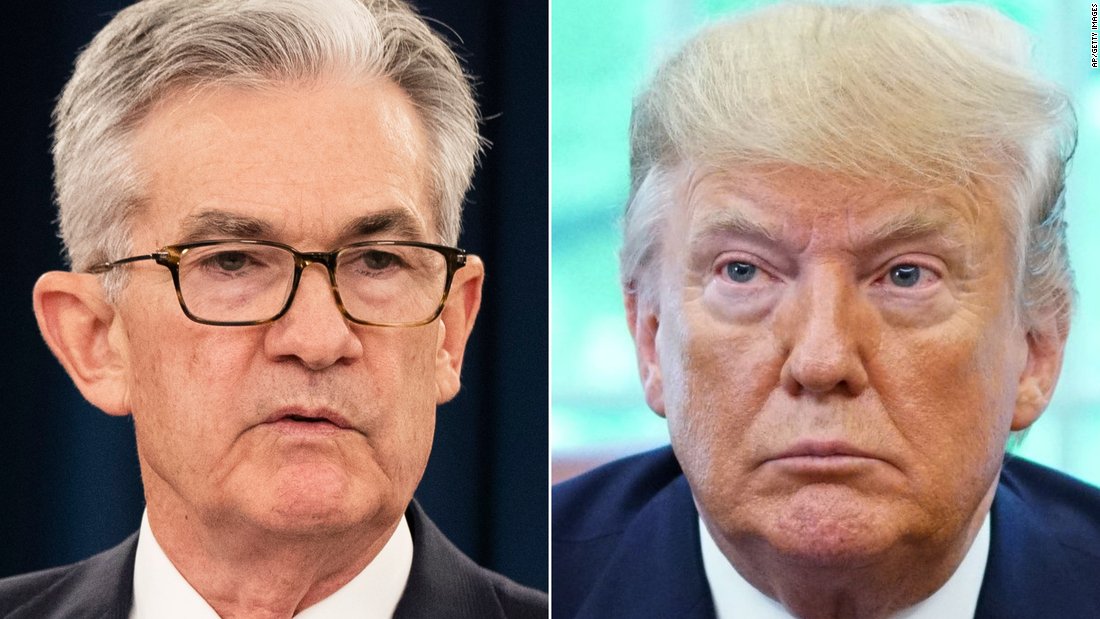Former President Donald Trump’s announcement that he will not remove Jerome Powell from his position as the chair of the U.S. Federal Reserve before Powell’s term expires marks a significant development in the ongoing tension between the two figures. This statement, made public in recent days, comes after years of public and private criticism from Trump, who had repeatedly accused Powell of being overly cautious with regard to interest rate policy. Powell’s leadership at the helm of the Federal Reserve has been contentious during Trump’s time in office, especially due to differences in monetary policy and approach to economic growth. However, Trump’s recent shift towards allowing Powell to serve out his term is seen by many as a calculated move to avoid exacerbating market instability during an already fragile economic recovery.
Jerome Powell, appointed by President Trump in 2017, has overseen the Federal Reserve during a turbulent period in the global economy, dealing with crises ranging from the tail end of the 2008 financial crisis to the unprecedented challenges posed by the COVID-19 pandemic. Powell’s four-year term as chairman is set to end in February 2022, and his leadership has been the subject of much debate, particularly due to his decisions to raise interest rates in order to prevent the economy from overheating. During the Trump administration, the former president was vocal about his discontent with the Fed’s monetary tightening policies, arguing that Powell’s actions were slowing down economic growth and hindering the potential for job creation.
For Trump, his decision not to intervene in Powell’s position is seen as a move towards maintaining stability in a volatile global financial landscape. The U.S. economy continues to grapple with the long-term effects of the pandemic, including supply chain disruptions, inflationary pressures, and rising unemployment rates. At a time when the global economy remains uncertain, any disruption to the leadership of the Federal Reserve could send shockwaves through the financial system, leading to market volatility and a loss of investor confidence. Trump’s announcement that he will allow Powell to serve out his term is likely aimed at preventing any additional uncertainty or political upheaval within the economic sphere.
In a broader context, this decision is also reflective of the delicate balance between political influence and the independence of the Federal Reserve. The Federal Reserve has long been regarded as an institution that must be insulated from political pressure, and its decisions—particularly those regarding interest rates—are based on long-term economic data rather than short-term political considerations. While it is rare for a sitting president to make such a bold public statement about the leadership of the Fed, Trump’s move to let Powell finish his term may be an acknowledgment of the need for continuity in leadership at a time when economic conditions remain volatile.
Despite this newfound alignment, the relationship between Trump and Powell has often been strained, as the former president consistently pushed for looser monetary policy to fuel economic growth. In 2018, Trump openly criticized Powell’s decision to raise interest rates, accusing him of slowing down what had been a booming economy under his administration. The rhetoric between the two men escalated over time, with Trump labeling Powell as a “terrible” Fed chairman and urging him to reverse the rate hikes. Yet, despite these vocal critiques, Powell has continued to maintain a stance focused on long-term economic health rather than short-term political pressures.
The news of Trump’s decision not to remove Powell before his term concludes raises important questions about the future of U.S. monetary policy. Trump’s relationship with Powell had been a key point of contention throughout his presidency, with the former president repeatedly calling for the Fed to take more aggressive action to keep interest rates low. However, Powell’s tenure has been marked by a cautious approach, with his goal being to manage inflationary risks and ensure that the economy does not overheat in the long run. This difference in approach highlights the ongoing ideological divide between the two men, with Trump favoring a more growth-oriented, low-interest-rate environment, while Powell has advocated for more measured and data-driven policy decisions.
As Powell’s term approaches its end, the question of his reappointment remains an open one. Trump’s decision not to intervene in Powell’s tenure for the time being could signal that the former president is adopting a more pragmatic approach to economic leadership in light of the ongoing crisis. While Trump has not yet publicly addressed whether he intends to reappoint Powell for a second term, many political observers believe that the Fed chair has a good chance of receiving another nomination. Despite their differences, Powell’s leadership during the pandemic and his management of the economic recovery have earned him respect from many quarters. His measured approach has been credited with keeping the economy on track during a period of immense uncertainty, and his adherence to the data-driven principles of the Federal Reserve has helped maintain investor confidence in U.S. markets.
In contrast, speculation has been mounting about possible successors should Powell be replaced, with various names being floated as potential candidates to lead the central bank. Given the importance of the Federal Reserve in shaping economic policy, Trump’s decision to delay any potential removal of Powell suggests that he may be taking a wait-and-see approach as the economic recovery continues. With inflationary pressures, rising debt levels, and ongoing global uncertainty, the next Fed chair will face significant challenges in navigating the U.S. economy through what is likely to be a period of turbulence and volatility.
Looking forward, the Federal Reserve will play a central role in shaping the economic trajectory of the United States in the coming years. The decisions made by the Fed in terms of interest rates, inflation control, and economic stimulus will have far-reaching implications not only for the U.S. but also for the global economy. As the economy continues to recover from the pandemic, there will likely be increasing pressure on the Federal Reserve to strike a balance between fostering growth and managing inflation risks. The future of Jerome Powell’s leadership will undoubtedly be a key factor in how effectively the U.S. can navigate the challenges ahead, and the political dynamics surrounding his reappointment will continue to shape the discourse around economic policy in the years to come.



